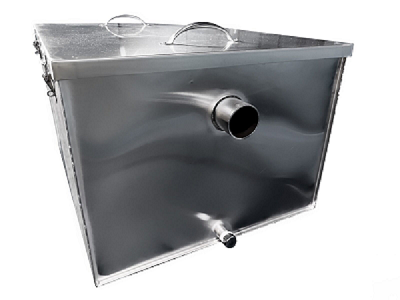
In the bustling environment of a commercial kitchen, a grease trap is an unsung hero, quietly working away to prevent fats, oils, and grease (collectively known as FOG) from entering the sewage system. This not only helps in maintaining plumbing health but also plays a crucial role in adhering to environmental standards. Given the intensity of kitchen activities, especially in high-volume establishments, the grease trap can easily become a victim of neglect. Regular cleaning, ideally monthly, is essential for its optimal functioning. Let's delve into the five tell-tale signs that your grease trap is crying out for attention.
5 Signs Your Grease Trap Has Issues


1. Ominous Odours
A well-functioning grease trap should not emit any foul smells. If you start noticing an unpleasant odour, it's a red flag. This could be due to the accumulation of food waste and debris, which over time degrade and create a stench. Additionally, an excessive build-up of grease can also contribute to these bad smells. If smells persist after cleaning, check seals and connections to ensure they are tight. Loose fitting seals can potentially release odours and will need replacing. This issue not only affects the working environment but can also be a turn-off for customers.
2. Clogged Pipes & Slow Draining Sinks
One of the primary functions of a grease trap is to prevent FOG from clogging the sewage lines. If you notice that your sinks are draining slowly or there is a recurrent issue of clogged pipes, it's likely due to a grease trap that's filled to capacity. This can escalate quickly, leading to flooding and necessitating an emergency kitchen shutdown for deep cleaning. Remember, when a grease trap is full, it not only fails to function properly but may also cause grease to escape through other outlets like sinks and taps.
3. Holes or Compromised Structure
Neglected grease traps can face severe structural issues. Decomposing food, if not cleaned regularly, can release sulfuric acid, leading to corrosion and weakening of a epoxy steel or stainless steel grease trap's structure. This deterioration not only affects the trap's efficiency but can also lead to costly replacements or repairs. Once the main structure has been compromised it very often cannot be repaired, a potentially costly replacement being the only solution.
4. Pesky Pests
Foul odours and the accumulation of grease and decaying food debris are a perfect recipe for attracting pests. Rodents and insects are not only a health hazard but are particularly unwelcome in a food preparation area. This can seriously jeopardise your kitchen's hygiene standards and can even lead to closure by health inspectors.
5. When Was It Last Cleaned?
If you're scratching your head trying to remember the last time your grease trap was cleaned, then it's been too long. Regular maintenance is not just advisable; it's essential.
Why Pro-Active is Better Than Re-Active
Adopting a proactive approach to grease trap maintenance can prevent many potential issues. Regular cleaning not only ensures efficient operation but also prevents emergencies that can disrupt normal business operations and lead to loss of earnings. Regular inspections and maintenance are vital. Identifying weak points in your grease system early on can save you from costly repairs in the future. Compliance with regulations and preventing FOG build-ups is not just about following the rules; it's about ensuring your kitchen runs smoothly and efficiently.
A well-maintained grease trap is crucial for the smooth operation of any commercial kitchen. Paying attention to these warning signs and ensuring regular maintenance will not only save you from future headaches but will also contribute to a healthier, more efficient kitchen environment.

Leave a Comment
Your email address will not be published. Required fields are marked *